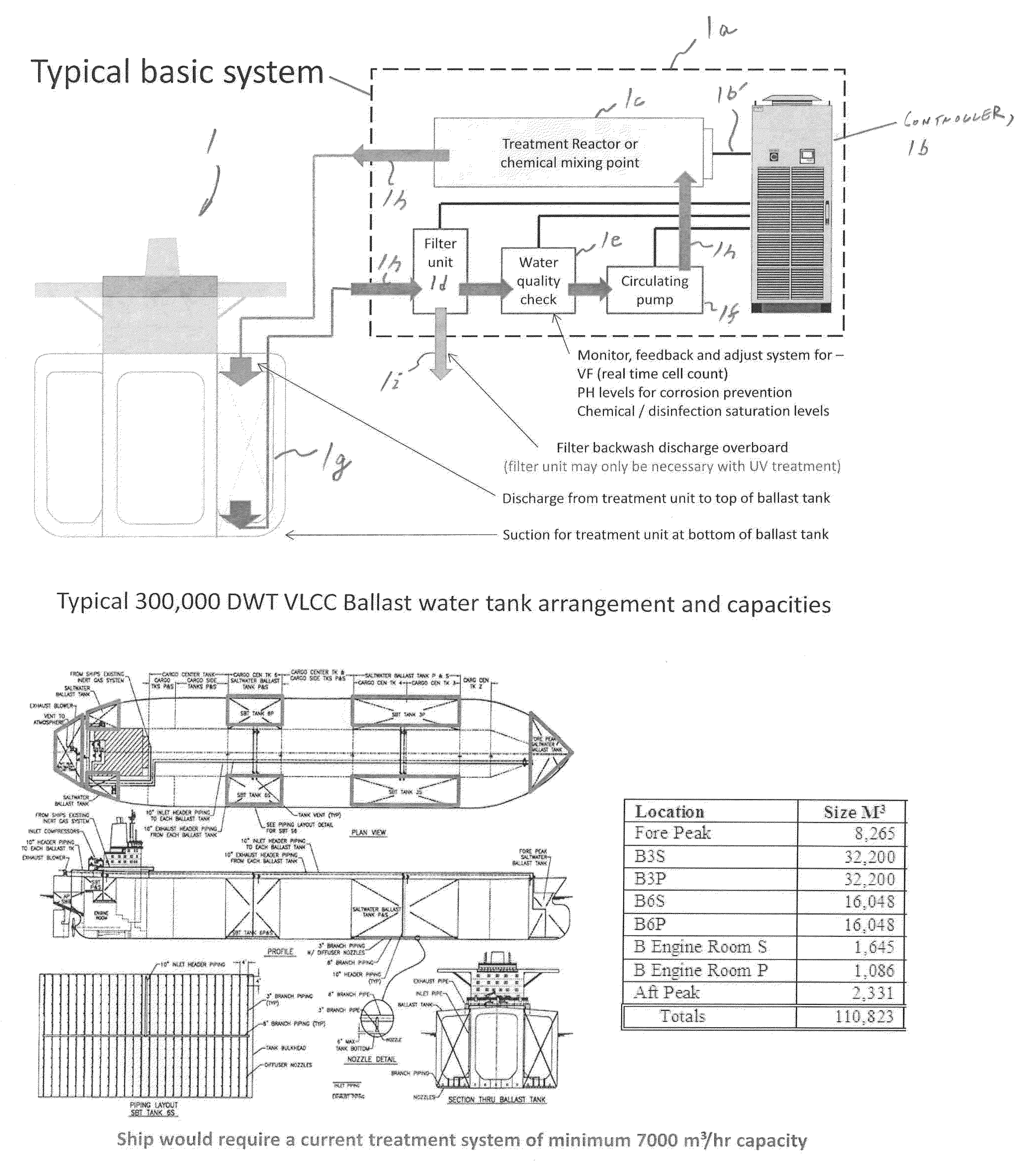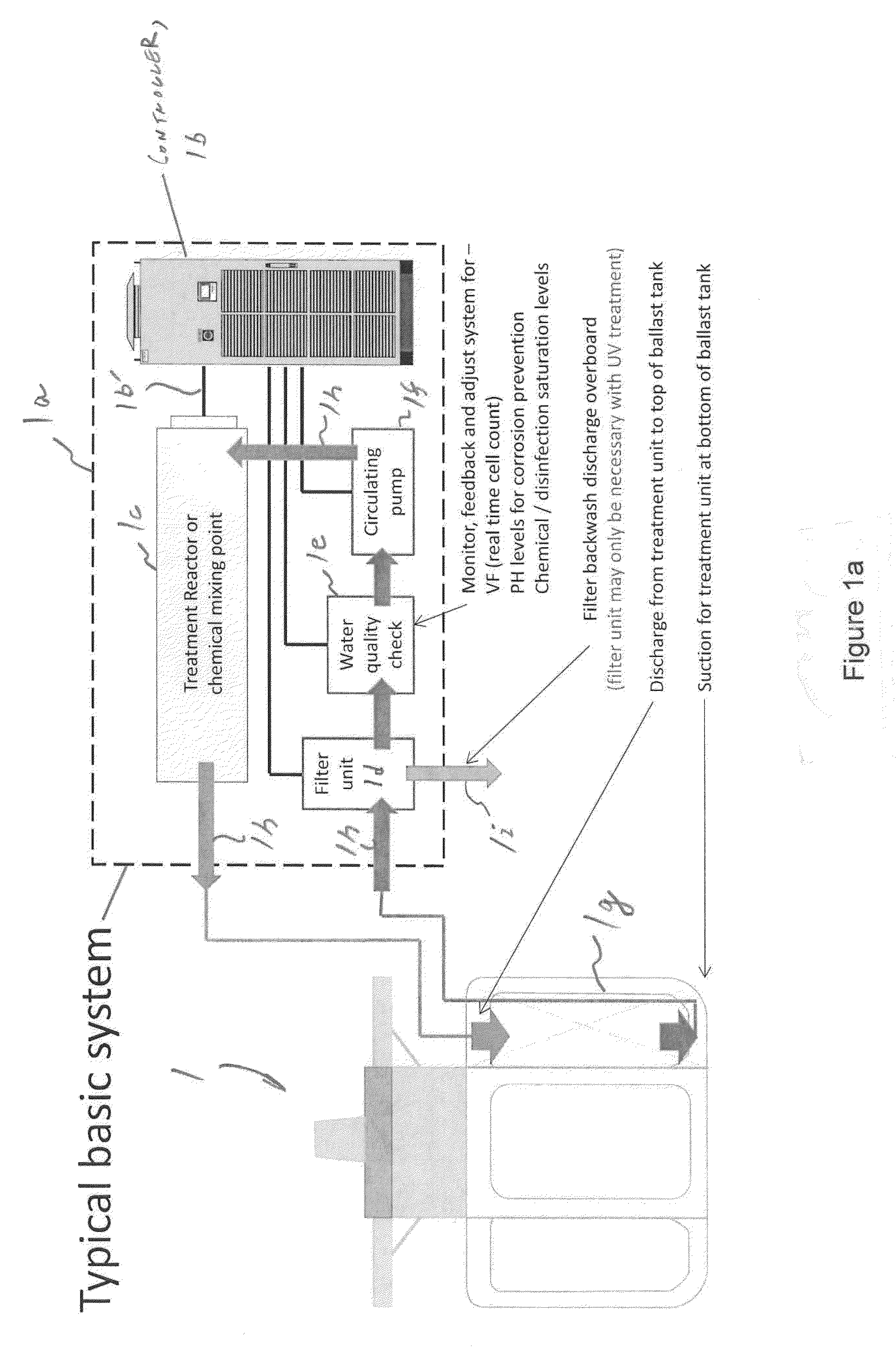Ballast water tank recirculation treatment system
- Summary
- Abstract
- Description
- Claims
- Application Information
AI Technical Summary
Benefits of technology
Problems solved by technology
Method used
Image
Examples
Embodiment Construction
[0081]According to some embodiments, the present invention may take the form of apparatus, e.g., that may include a signal processor or signal processing module configured to:[0082]receive signaling containing information about the quality of water in a ballast water tank recirculation treatment system; and[0083]determine information about a variable fluorescence treatment to the water in the ballast water tank recirculation treatment system, based at least partly on the signaling received.
[0084]Embodiments of the present invention may also include one or more of the following features:
[0085]The signal processor or signal processing module may be configured to provide corresponding signaling, e.g., including control signaling, containing information about the variable fluorescence treatment.
[0086]The apparatus may include at least one variable fluorescence device configured to receive the corresponding signaling and provide the variable fluorescence treatment, including providing ul...
PUM
 Login to View More
Login to View More Abstract
Description
Claims
Application Information
 Login to View More
Login to View More - R&D
- Intellectual Property
- Life Sciences
- Materials
- Tech Scout
- Unparalleled Data Quality
- Higher Quality Content
- 60% Fewer Hallucinations
Browse by: Latest US Patents, China's latest patents, Technical Efficacy Thesaurus, Application Domain, Technology Topic, Popular Technical Reports.
© 2025 PatSnap. All rights reserved.Legal|Privacy policy|Modern Slavery Act Transparency Statement|Sitemap|About US| Contact US: help@patsnap.com



